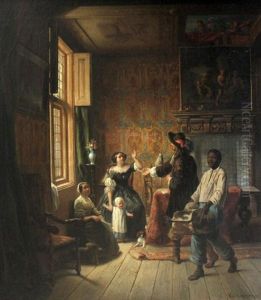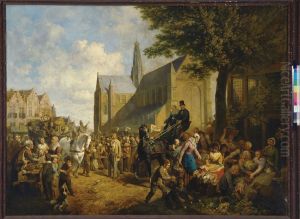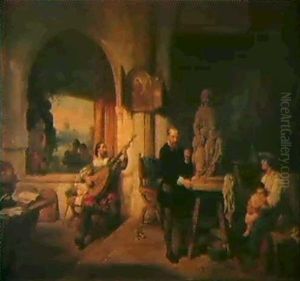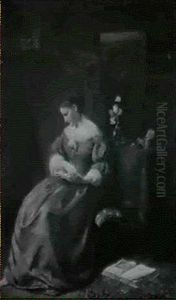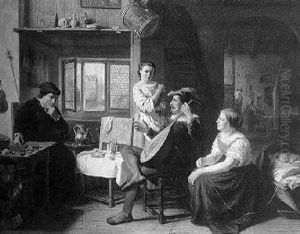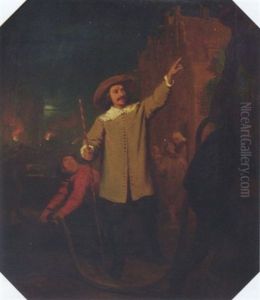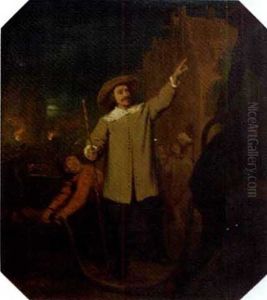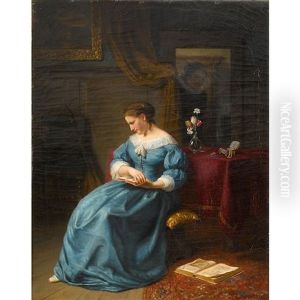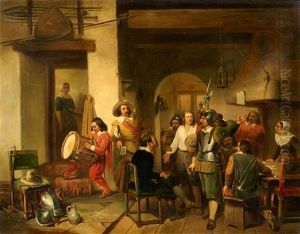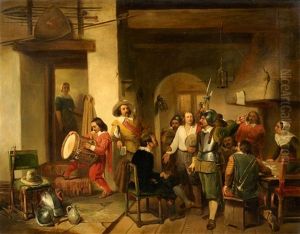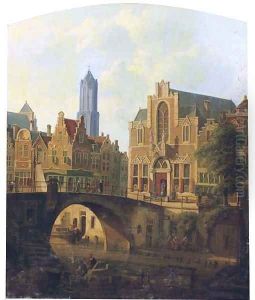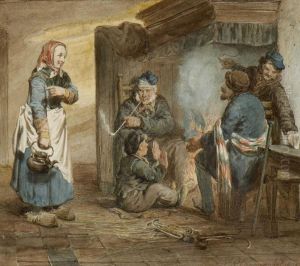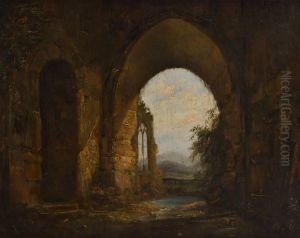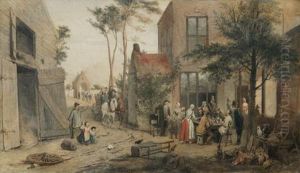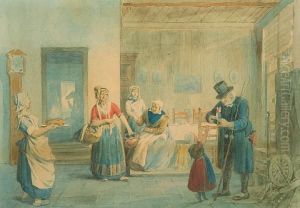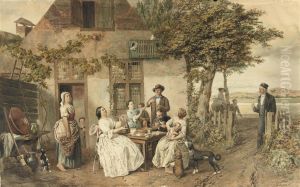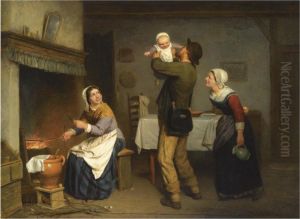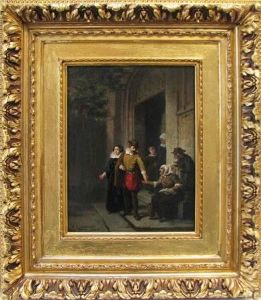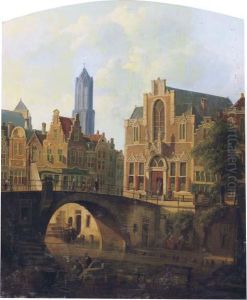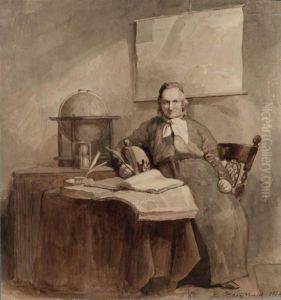Reinier Craeyvanger Paintings
Reinier Craeyvanger, born in 1812 and deceased in 1880, was a multifaceted Dutch artist known for his contributions as a painter, etcher, and lithographer. His artworks, primarily focused on genre scenes, landscapes, and interiors, reflect the 19th-century Dutch artistic traditions and the influence of the Romantic movement. Craeyvanger’s life was rooted in an era where art began to reflect the rapidly changing society around him, capturing both the everyday life of his time and the evolving cultural landscape.
Originating from a family with artistic inclinations, Reinier was one of several siblings who pursued careers in the arts, suggesting a supportive and creatively nurturing environment. This familial context undoubtedly played a role in fostering his diverse talents. Despite the prominence of his work in genre painting, Craeyvanger was also proficient in creating detailed etchings and lithographs, a testament to his versatility and skill across different mediums.
Throughout his career, Craeyvanger exhibited a keen interest in the technical aspects of art production, as evidenced by his mastery of etching and lithography. These skills allowed him to explore and express the nuances of daily life and nature with a distinct clarity and depth. His works often depicted scenes filled with rich details and atmospheric qualities, inviting viewers into the moment captured.
Craeyvanger's contributions to Dutch art were recognized in his time, and he participated in various exhibitions, earning accolades for his artistic achievements. Despite the acclaim, much of his life and work have not been as prominently documented or celebrated as some of his contemporaries. This oversight may be attributed to the vast number of artists during the period and the shifting focus of art historical interest over time.
After his death in 1880, Reinier Craeyvanger left behind a legacy that, while perhaps not as widely recognized as that of some peers, remains significant for its artistic quality and historical value. His works continue to be appreciated by those who seek to understand the depth and diversity of 19th-century Dutch art, offering insights into the era’s cultural and social dynamics through the lens of his keen observation and artistic prowess.
